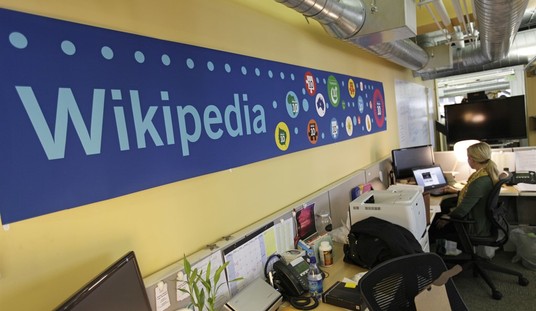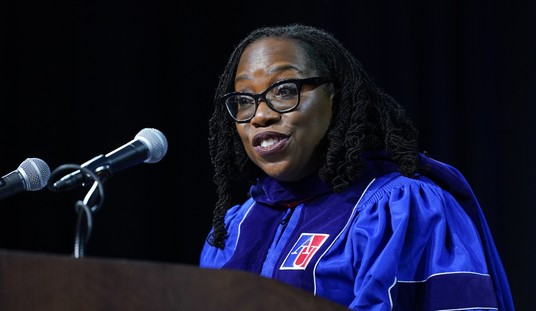What a difference six months — and a health-care overhaul proposal — can make! Just six months ago, the U.S Preventive Services Task Force, which works within the Department of Health and Human Services as a “best practice” panel on prevention, sounded a warning signal over a slight decline in annual mammograms among women in their 40s. In fact, they warned women of this age bracket that they could be risking their lives if they didn’t get the annual preventive exam (via HA reader Devil’s Advocate):
The downward trend, however slight, has breast cancer experts worried. Mammograms can enable physicians to diagnose the disease at early stages, often before a lump can be felt. “When breast cancer is detected early, it often can be treated before it has a chance to spread in the body and increase the risk of dying from the disease,” says Katherine Alley, medical director of the breast health program at Suburban Hospital in Bethesda.
The U.S Preventive Services Task Force, an independent panel of experts working under the Department of Health and Human Services, recommends that women older than 40 get a mammogram every one to two years. The task force finds the test most helpful for women between ages 50 and 69, for whom it says the evidence is strongest that screening lowers death rates from breast cancer. Other groups, including the American Medical Association, suggest a more rigorous schedule, saying the test should be done every year; insurers often pay for annual tests.
But experts say they are seeing gaps beyond two years in many cases. Carol Lee, chair of the American College of Radiology’s Breast Imaging Commission and a radiologist at the Memorial Sloan-Kettering Cancer Center in New York, says many women understand that they need to have a mammogram but don’t go back for repeat tests after the first one. In Bethesda, Alley said she has even heard anecdotal reports of breast cancer survivors forgoing recommended mammograms.
But today, that same panel says … never mind:
“We’re not saying women shouldn’t get screened. Screening does saves lives,” said Diana B. Petitti, vice chairman of the U.S. Preventive Services Task Force, which released the recommendations Monday in a paper being published in Tuesday’s Annals of Internal Medicine. “But we are recommending against routine screening. There are important and serious negatives or harms that need to be considered carefully.”
Several patient advocacy groups and many breast cancer experts welcomed the new guidelines, saying they represent a growing recognition that more testing, exams and treatment are not always beneficial and, in fact, can harm patients. Mammograms produce false-positive results in about 10 percent of cases, causing anxiety and often prompting women to undergo unnecessary follow-up tests, sometimes-disfiguring biopsies and unneeded treatment, including surgery, radiation and chemotherapy.
But the American Cancer Society, the American College of Radiology and other experts condemned the change, saying the benefits of routine mammography have been clearly demonstrated and play a key role in reducing the number of mastectomies and the death toll from one of the most common cancers.
“Tens of thousands of lives are being saved by mammography screening, and these idiots want to do away with it,” said Daniel B. Kopans, a radiology professor at Harvard Medical School. “It’s crazy — unethical, really.”
What changed in six months to change the USPSTF from a sky-is-falling hysteric on a 1% decline in testing to Emily Litella? If the administration gets its way, the government will be paying for a lot more of these exams when ObamaCare passes. That will put a serious strain on resources, especially since many of the providers will look to avoid dealing with government-managed care and its poor compensation rates.
The motivation for HHS will be to cut costs, not to save lives. The sudden reversal in six months of the USPSTF, especially after it made such a stink over a relatively minor decline in screening, certainly makes it appear that they have other priorities than life-saving in mind here.
One final thought. Barack Obama predicated his ObamaCare vision on the notion that increased prevention would save costs. Suddenly, his administration is for decreased screening and prevention. Could that have anything to do with the CBO scoring on screening? And what does that say about how government will make decisions once they control the compensation and care in the US?
Update: Courtesy of an anonymous reader, here are the members of the US Preventive Services Task Force. See if you can figure out the one thing they all have in common:
Current members of the Task Force are listed below. They have recognized expertise in prevention, evidence-based medicine, and primary care.
Bruce N. Calonge, M.D., M.P.H. (Chair)
Chief Medical Officer and State Epidemiologist
Colorado Department of Public Health and Environment, Denver, CODiana B. Petitti, M.D., M.P.H. (Vice Chair)
Professor of Biomedical Informatics
Fulton School of Engineering
Arizona State University, Tempe, AZSusan Curry, Ph.D.
Dean, College of Public Health
Distinguished Professor
University of Iowa, Iowa City, IAAllen J. Dietrich, M.D.
Professor, Community and Family Medicine
Dartmouth Medical School, Hanover, NHThomas G. DeWitt, M.D.
Carl Weihl Professor of Pediatrics
Director of the Division of General and Community Pediatrics
Department of Pediatrics, Children’s Hospital Medical Center, Cincinnati, OHKimberly D. Gregory, M.D., M.P.H.
Director, Maternal-Fetal Medicine and Women’s Health Services Research
Cedars-Sinai Medical Center, Los Angeles, CADavid Grossman, M.D., M.P.H.
Medical Director, Preventive Care and Senior Investigator, Center for Health Studies, Group Health Cooperative
Professor of Health Services and Adjunct Professor of Pediatrics
University of Washington, Seattle, WAGeorge Isham, M.D., M.S.
Medical Director and Chief Health Officer
HealthPartners, Minneapolis, MNMichael L. LeFevre, M.D., M.S.P.H.
Professor, Department of Family and Community Medicine
University of Missouri School of Medicine, Columbia, MORosanne Leipzig, M.D., Ph.D
Professor, Geriatrics and Adult Development, Medicine, Health Policy
Mount Sinai School of Medicine, New York, NYLucy N. Marion, Ph.D., R.N.
Dean and Professor, School of Nursing
Medical College of Georgia, Augusta, GAJoy Melnikow, M.D., M.P.H.
Professor, Department of Family and Community Medicine
Associate Director, Center for Healthcare Policy and Research
University of California Davis, Sacramento, CABernadette Melnyk, Ph.D., R.N., C.P.N.P./N.P.P.
Dean and Distinguished Foundation Professor in Nursing
College of Nursing & Healthcare Innovation
Arizona State University, Phoenix, AZWanda Nicholson, M.D., M.P.H., M.B.A.
Associate Professor
Johns Hopkins School of Medicine and Bloomberg School of Public Health, Baltimore, MDJ. Sanford (Sandy) Schwartz, M.D.
Leon Hess Professor of Medicine, Health Management, and Economics
University of Pennsylvania School of Medicine and Wharton School, Philadelphia, PATimothy Wilt, M.D., M.P.H.
Professor, Department of Medicine, Minneapolis VA Medical Center
University of Minnesota, Minneapolis, MN
What do they have in common? There isn’t a single oncologist among them, at least not as a listed specialty by the USPSTF published roster.








Join the conversation as a VIP Member